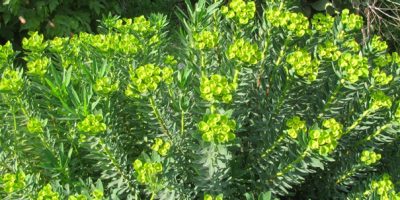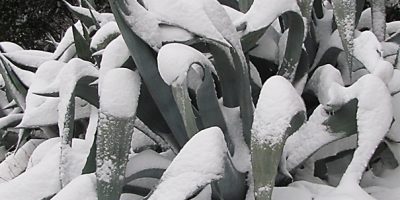THE FACULTY OF SCIENCE BOTANICAL GARDEN ON MARJAN
The entry to the Garden is interesting to all citizens and tourists. Moreover, the Garden is used for teaching students of biology, ecology, pharmacy, Mediterranean agriculture, holding field classes, as well as organising various gatherings and symposiums on Mediterranean flora. The Garden has been used over the last five years for popularising science and educating youth of all ages by holding the Croatian Botanical Garden and Arboretum Week, in collaboration with biology students and professors from the Department of Biology, Faculty of Science. These youth include those from the youngest kindergarten ages, through to primary and secondary school pupils, and university students. Furthermore, the Garden is used to hold cultural and ecological courses for the general public. The Garden is accessible to all tourists who want to learn about Mediterranean flora and fauna, and to all those expressing an interest.
BRIEF HISTORY OF THE BOTANICAL GARDEN ON MARJAN
The Botanical Garden is situated on the southern slopes of Marjan, at 85-150 metres above sea level. It was founded in 1951 as part of the former Split Pedagogic Academy. The Academy’s legal successor is the Faculty of Science at University of Split. The founding of the Garden solely rested on the enthusiasm of the botany professor, Professor Petar Matković who worked in the Garden together with students specialising in biology. The Marjan Society has also contributed a lot to the founding of the Botanical Garden, its renewal and conservation.
In the period from 1953 1958, five glasshouses were built in the Garden. The Garden area was divided into two sections: cultivated areas with the glasshouses and natural degraded areas with autochthonous Eumediterranean plants, belonging to elements of the vegetation community of evergreen forests and macchia belonging to the holm oak. A total of approx. 2,500 plants grew in both areas. The natural area covers the northern part of the Garden area totalling 1 hectare, on which wild shrubs and a succession of vegetation towards the macchia and pine-oak forest can be monitored and studied. This section has elements belonging to a community of mixed forest of Aleppo pines and pine oaks.
In the western section of the Garden, there is a smaller number of holm oaks, the remains of thick vegetation which had once grown in that area. On the vertical cliffs containing hazmophyte vegetation belonging to limestone rocks of the Centaureo-Campanulion alliance, along with the Inula, a pyramidal bellflower, there also grew the Centaurea ragusina, which has in time disappeared. Cultivated again from the seeds, this species of plant has gain spontaneously inhabited the Garden crevices. Cultivated areas contained a perennial garden, grafting plants for cultivating ornamental plants, an arboretum, a citrus garden, rosary, olive grove, seed bed, seed plot. A range of plants were cultivated in the greenhouses such as exotic potted plants, semi-shrubs and shrubs, aquatic plants, succulents, plant multiplying and seed stratification. The period that the Garden flourish was prior to 1975, whereupon after the retirement of Professor Petar Matković, a smaller number of employed gardeners from the once five gardens to only one, and a further series of difficult circumstances lead to it slowly deteriorating.
CURRENT SITUATION IN THE BOTANICAL GARDEN
Four years ago, a new Botanical Garden manager was appointed, Assistant Professor Mirko Ruščić, PhD, who lectures at the Faculty of Science. He initiated a series of activities to revitalise the garden and renew the plant species. In collaboration with students from the Faculty of Science, the study group, in Biology and Chemistry, a number of campaigns were organised for cleaning, trimming, building drywalls, planting vegetation and other garden activities. The campaigns aimed at doing horticultural work in the Garden also including volunteers from the general public in Split, pupils from some primary and secondary schools in Split, and people from army veteran associations.

THE FACULTY OF SCIENCE BOTANICAL GARDEN ON MARJAN
The goal of these activities was to create a Mediterranean Botanical Garden containing autochthonous and cultivated ornamental, medicinal, Summer aromatic, endemic and protected species of plants. Given the terrace-like appearance of the Garden, there are plans underway to plant species, while taking into consideration the existing conditions on particular terraces. For now, there are approx. 550 plant species in the Garden, which have to a large extent been registered and designated using their Croatian and Latin names. The five greenhouses could be of great importance in cultivating and exhibiting plants. The greenhouses were built in the Garden few decades ago and should be completed renovated. Up till now, two of the greenhouses have been partially renovated. Significant financial resources are required for renovating the remaining greenhouses.
One of the goals is to complement the collection of seeds and herbarium collections. This project requires additional space in the Botanical Garden and additional financial expenditure. The cultivation of endangered and protected plants species has begun in the Botanical Garden, which will help in conserving and returning them once again to their natural habitats. These are, in fact, the goals of the Global Strategy for Plant Conservation.
Achieving all the goals of rehabilitating the Botanical Garden in line with European standards requires knowledge, expertise, love, persistence, continual work, enthusiasm, and financial support from the City of Split, the Faculty, University, as well as devising expert and scientific projects and activities based upon which the Garden could receive continual financing.
Botanical Garden on Marjan (Faculty of Science)
Manager
Assistant Professor Mirko Ruščić, PhD





